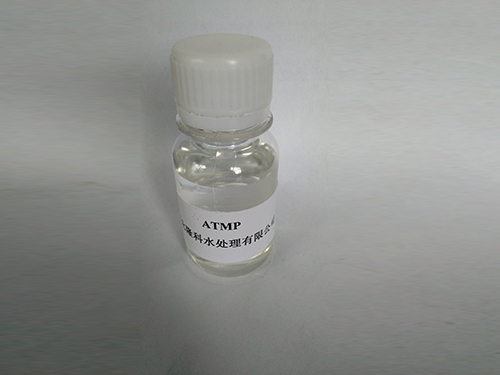polycarboxylic acid examples
The Role and Examples of Polycarboxylic Acids in Chemistry
Polycarboxylic acids are a class of organic compounds characterized by the presence of multiple carboxylic acid (-COOH) groups in their molecular structure. These compounds play significant roles in various chemical processes and have numerous applications in different fields, ranging from industrial manufacturing to pharmaceuticals. In this article, we will explore some examples of polycarboxylic acids, their properties, and their applications.
Definition and Structure
Polycarboxylic acids are defined by having two or more carboxyl groups in their molecular structure. The presence of multiple -COOH groups not only enhances the acidity of these compounds but also allows them to participate in a wide range of chemical reactions. The structure of polycarboxylic acids can vary significantly, influencing their physical and chemical properties.
Common Examples of Polycarboxylic Acids
1. Citric Acid One of the most well-known polycarboxylic acids is citric acid (C6H8O7). Found naturally in citrus fruits like lemons and oranges, citric acid contains three carboxylic acid groups. It is commonly used as a flavoring agent in food and beverages, a preservative, and a chelating agent in pharmaceuticals. Citric acid plays a crucial role in the Krebs cycle, which is essential for metabolic processes in living organisms.
2. Tartaric Acid Tartaric acid (C4H6O6), another significant polycarboxylic acid, is predominantly found in grapes. It contains two carboxyl groups and is widely used in the food industry as a stabilizer for certain products, such as cream of tartar in baking. Tartaric acid also has applications in winemaking, where it helps to maintain the stability of the wine and contributes to its taste.
3. Malic Acid Malic acid, which has the formula C4H6O5, is another polycarboxylic acid that contains two carboxyl groups. Commonly found in apples and other fruits, malic acid is used as a flavor enhancer and preservative. It is also employed in cosmetics, pharmaceuticals, and as a dietary supplement, particularly in energy drinks.
4. Succinic Acid Succinic acid (C4H6O4) is a four-carbon dicarboxylic acid that contains two carboxyl groups. This compound is used in the synthesis of various chemicals and polymers, including biodegradable plastics and surfactants. Succinic acid is also recognized for its potential health benefits, including its role in enhancing mitochondrial function and energy metabolism.
polycarboxylic acid examples

5. Glutaric Acid With the formula C5H8O5, glutaric acid is a five-carbon dicarboxylic acid. It is used in the production of polyesters, plastics, and resins. Additionally, glutaric acid has applications in the pharmaceutical industry for the synthesis of medications and as a biochemical intermediate in various pathways.
6. Boric Acid Although primarily known for its uses in household products and as an insecticide, boric acid (H3BO3) can also be considered a polycarboxylic acid due to its multiple acidic properties. Its interactions in biochemical processes and applications in agriculture highlight the diverse functionality of polycarboxylic acids.
Applications of Polycarboxylic Acids
The applications of polycarboxylic acids are extensive and varied. In the food industry, these acids function as flavor enhancers, preservatives, and stabilizers. In pharmaceuticals, they are integral to drug formulation and can enhance the solubility of active pharmaceutical ingredients.
In the polymer industry, polycarboxylic acids serve as key intermediates in the manufacture of sustainable materials and polymers. For example, polycarboxylic acids are crucial in producing biodegradable plastics, which have gained significant attention due to environmental concerns regarding traditional plastic waste.
Furthermore, in biochemistry and molecular biology, polycarboxylic acids play essential roles as metabolic intermediates and regulators. They are involved in critical pathways, such as the citric acid cycle, and help facilitate energy production in living organisms.
Conclusion
Polycarboxylic acids are versatile compounds that impact numerous fields. From their essential biological roles to their varied industrial applications, these acids demonstrate the significance of having multiple carboxyl groups in influencing both reactivity and functionality. Understanding and harnessing the properties of polycarboxylic acids can lead to advancements in various scientific fields, addressing challenges related to sustainability, health, and food safety.
-
Pbtc Scale InhibitorPBTC: A Scale Protector for Industrial Water TreatmentNewsAug.05,2025
-
Organic Phosphonate: An Efficient Defender in the Field of Scale InhibitionNewsAug.05,2025
-
Hydrolyzed Polymaleic Anhydride: Green Pioneer in Scale Inhibition FieldNewsAug.05,2025
-
PAPEMP Polyamino Polyether Methylene Phosphonic Acid For SaleNewsAug.05,2025
-
Flocculant Water Treatment: A Pioneer in Purification in the Field of Water TreatmentNewsAug.05,2025
-
Benzyl Isothiazolinone: An Efficient and Broad-Spectrum Antibacterial Protective GuardNewsAug.05,2025





